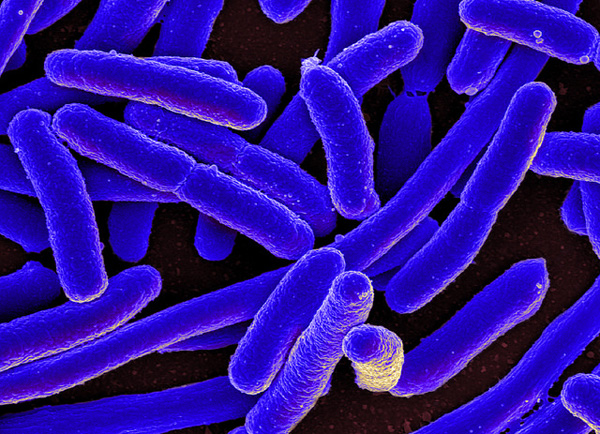
Just last month, Harvard Medical School scientists reported their discovery of a new family of proteins that virtually all bacteria use to build and maintain their cell walls.
The first cell-wall synthesizers, described in 1957, were named penicillin-binding proteins, for the drug that disables them. There were hints of other actors, but no one had nailed down their identity.
Finding a second set of wall synthesizers, known as SEDS proteins, can help pave the way for new therapies to target the cell wall and kill harmful bacteria, said David Rudner and Thomas Bernhardt, both HMS professors of microbiology and immunobiology. They published their findings on Aug. 15 in Nature.
Now, a team led by Bernhardt and Ethan Garner at Harvard University has zoomed in on that picture, revealing how the two families of cell-wall synthesizers work separately as they weave strands of sugars into a bacterium’s outer shell. The new paper appeared Sept. 19 in Nature Microbiology.
“These findings fundamentally change how we think about the cell-wall assembly process in bacteria,” said Bernhardt.
The previous study showed that SEDS proteins spin hoop-like structures around the cell as they construct a wall for the bacterium Bacillus subtilis. SEDS were previously known, but their role in building the bacterial cell wall wasn’t.
Now the teams of Bernhardt and Garner have shown how SEDS proteins work with the penicillin-binding proteins in a different bacterium, Escherichia coli. They inactivated the penicillin-binding proteins to see if they could catch the other cell-wall builders in the act—nabbing what the microbiology field had dubbed the “missing polymerases.”
“For many people in the field, E. coli is the standard. If it’s not true in E. coli, we’re not sure if it’s so general,” Rudner said. “So Tom and Ethan’s companion paper is saying we can even detect that missing activity in E. coli.”
The Harvard team’s study suggests that SEDS proteins work to build the cell wall framework while penicillin-binding proteins fortify the structure by filling in the gaps.
The two sets of cell-wall builders aren’t entirely independent of each other. Inactivation of one or the other reduces cell-wall synthesis to about 20 percent of normal levels. So even though they don’t work together directly, full cell-wall synthesis efficiency requires both types to be active.
The scientists allow for the possibility that the protein families may be collaborating. They hope their work will lead to a better understanding of how bacteria assemble their cell walls—and potentially how to disrupt them with new antibiotics.
This work was supported by National Institutes of Health grants: R01AI083365, AI099144, DP2AI117923 and a Center of Excellence for Translational Research (CETR) grant U19 AI109764. Additional support was provided by: a Smith Family Award, Searle Scholar Fellowship, a pre-doctoral fellowship from CHIR and the Dana-Farber Strategic Research Initiative.
Co-investigators include Hongbaek Cho, Carl Wivagg, Mrinal Kapoor, Zachary Barry, Patricia Rohs, Hyunsuk Suh, and Jarrod Marto.


